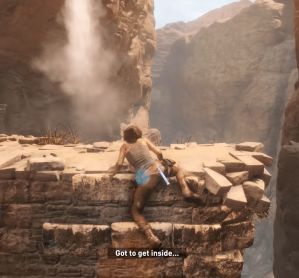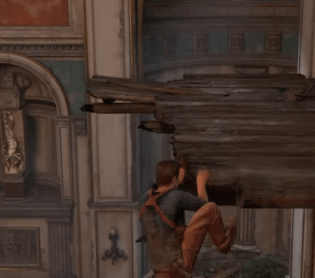Sexualised characters can be used in games to attract a different age groups to play the game. There are advantages and disadvantages to this. Advantages can be increasing sales numbers as people will buy the game for sex appeal and can increase the length of time people playing the game. The disadvantages of this are having games inappropriate for children, who could still get a hold of the game. This could cause controversy about the game or otherwise affect the game’s reputation negatively.
/cdn.vox-cdn.com/uploads/chorus_asset/file/6255769/tracer_ots.0.jpg)
One example of a controversy revolving a sexualised character was the depiction of Tracer, specifically one of her poses.
Players thought this was pose was out of her charater and was only used for the added sex appeal. Blizzard have since changed this pose in the game.
The line between creating attractive characters to bring in more players and overly sexualising said characters is vague as everyone has their own opinions of what is overly-sexualised and what should and shouldn’t be censored.
As video games are modeled and animated rather than live action, it affects the design of the characters, allowing the characters to be portrayed with the un-achievable images of the ‘perfect woman’ or ‘perfect man’ but this is only portrayed physically, resulting in characters having body proportions that are not natural and in turn take a toll on peoples confidence. This, however stems from fantasy and escapism of video games, as we want to be those characters and experience what it’s like to be like them, so they are created to appeal.
It has been suggested by research and studies that pandering towards sexualised characters can lead to people being more judging towards women and themselves, which can affect others and their own mental health in terms of body image. However, there is no direct link to video games or particular video game genres and players developing sexist attitudes.
Those who oppose sexualised characters are usually concerned for people’s body image and the effect that being exposed to overly sexualised characters will have on younger audiences. There are many people however, that are fine with sexualised characters, and this is seen predominantly in the cosplay scene, where fans will dress up as these overly sexualised characters and portray the character as accurately as possible. Others will compromise and adapt the outfit and act in a way to retain their modesty.
Hypodermic Needle Theory
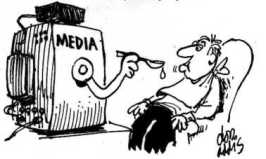

The hypodermic needle theory models the effects of the media on audiences which is characterised as ‘injecting’ views, thoughts and beliefs into the heads of those audiences. This suggests the media have a strong control over their viewers. As these mass media companies are so large, it leaves the audience who have a different view voiceless and powerless.
There are not many pros for the audience, as they are being fed information in a particular way, which can potentially be used to manipulate them. Within the media and marketing however, it can create false needs amongst the audience and can push a certain agenda. This model can be seen as almost ‘mass-brainwashing’ as the audience are passively accepting everything that is being fed to them and do not attempt to question or interpret a situation further than they are told.
Uses and Gratification Theory
The uses and Gratification theory is a model that shows a person will only select a particular media if they believe they gain something from it. This is described as an active audience. This means the audience gain power over the media – for example a person might decide to get their news from a company that they believe they will get more accurate and noteworthy stories from, or that aim their stories towards the kind of information they want to see (i.e. a sports magazine for a sports fan).
The pros of this model are that it offers the audience a choice of what they want to see and tend to see more positive information and feedback. However, this also means the media can still target certain groups of people with the same opinions and as people can pick and choose what they see, it may create unjustified biases towards people and things.
Reception Theory
The reception theory is a model that shows the information is ‘Encoded by creators and decoded by audience’ as depending on the audience’s background, different people might receive information from the media in different ways. The model shows the auidence recieves the information in one of three ways – dominant, negotiated and oppositional
Dominant is intended reading by media – completely engaging and agreeing, decoding the message as the creators intended.
Negotiated is see the point but offer alternative or curiosity – adjusting the message to fit their views but having no strong opinion to it.
Oppositional is completely opposing – rejected as it does not fit with the audience views.
The pros of this model are there is no one audience to control and everyone will have a different opinion to media. However, this also means that an audience can interpret some information the wrong way and cause a backlash to the creator that was never intended.
Conclusion
Sexualised characters constantly cause controversy but I believe the way to ‘deal’ with them is that it is okay for a character to show some skin or act in a certain way but their character should not revolve around this and they should be able to be replaced by someone of the opposite gender and it should not make a difference. The characters in question should also be realistic and not project unrealistic body proportions and should not be used to exploit the audience.
This approach has been used in the example of Lara Croft. She used to be a predominant sex symbol and has recently been re imagined – as much as she wears the same outfit and is still very attractive, her body proportions are more realistic and she no longer does her very sexual actions, and her role could easily be replaced by an Indiana Jones-esque male.
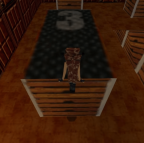
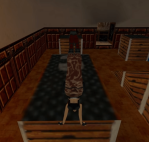
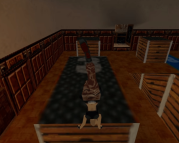
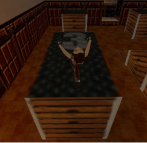
This is Lara Croft’s old animation, it is very sexual and slow, as opposed to the to the climb animation in the newest game, which is very generic and quite fast. It is quite similar to Nathan Drake’s animation in Uncharted 4, showing that Lara Croft could be replaced by a member of the opposite gender and it could be released as normal. However, if Lara was replaced in the older game, eyebrows would be raised and the animation would be questioned.
